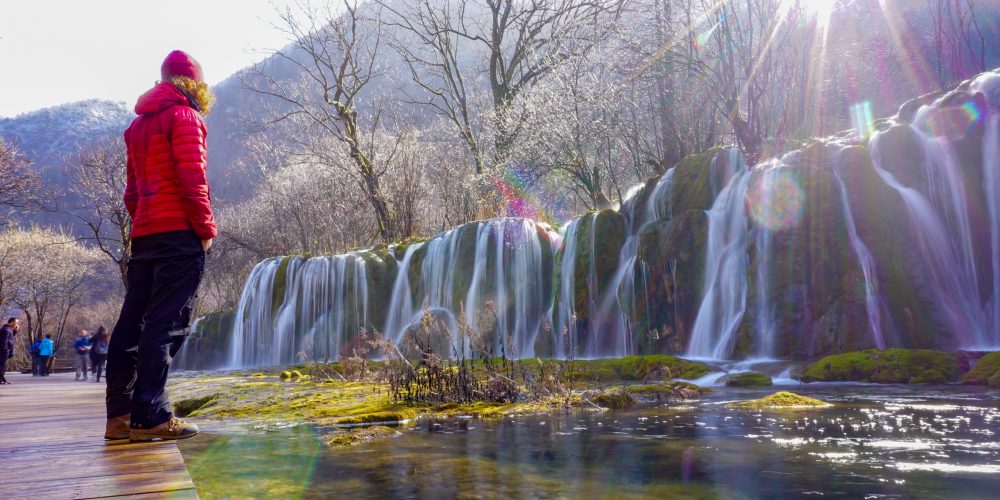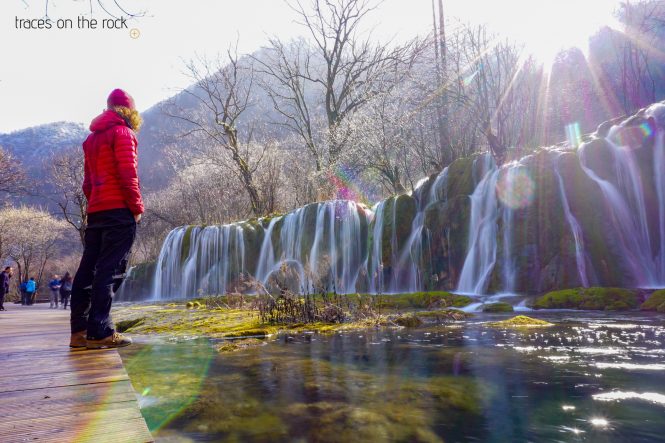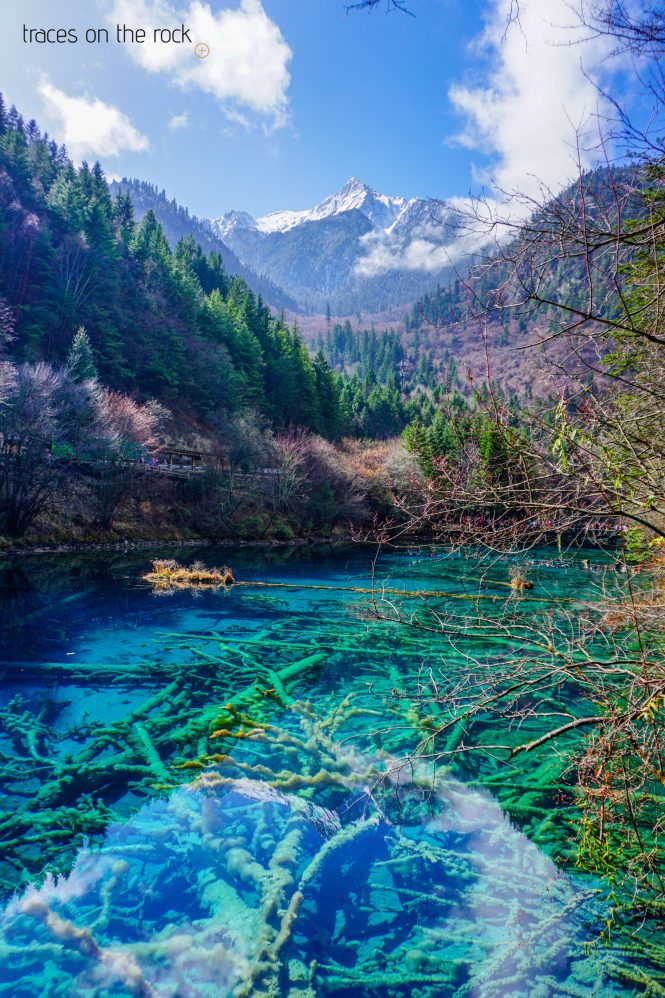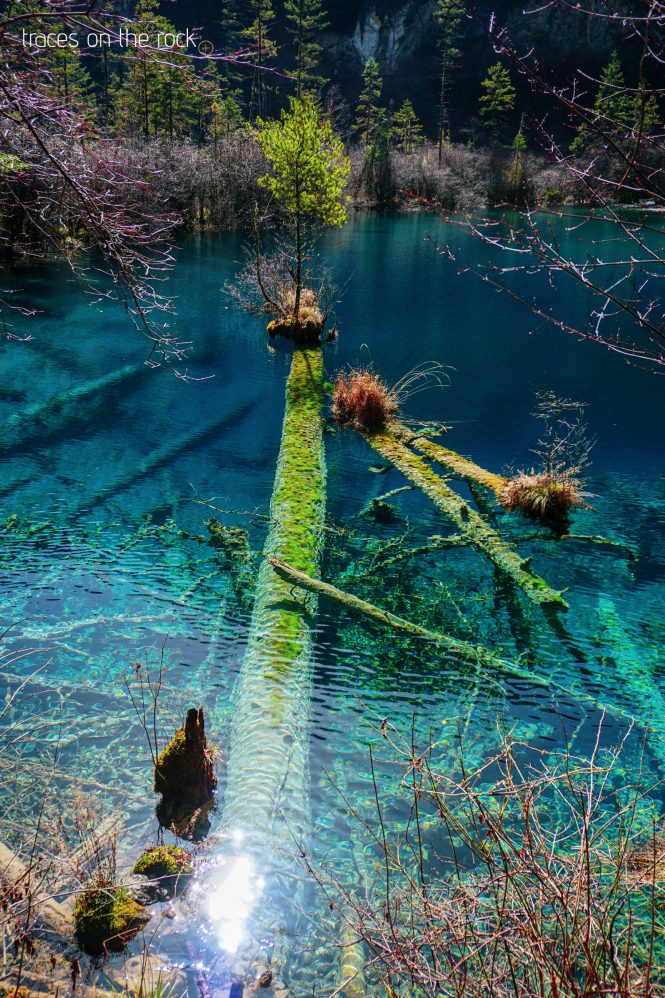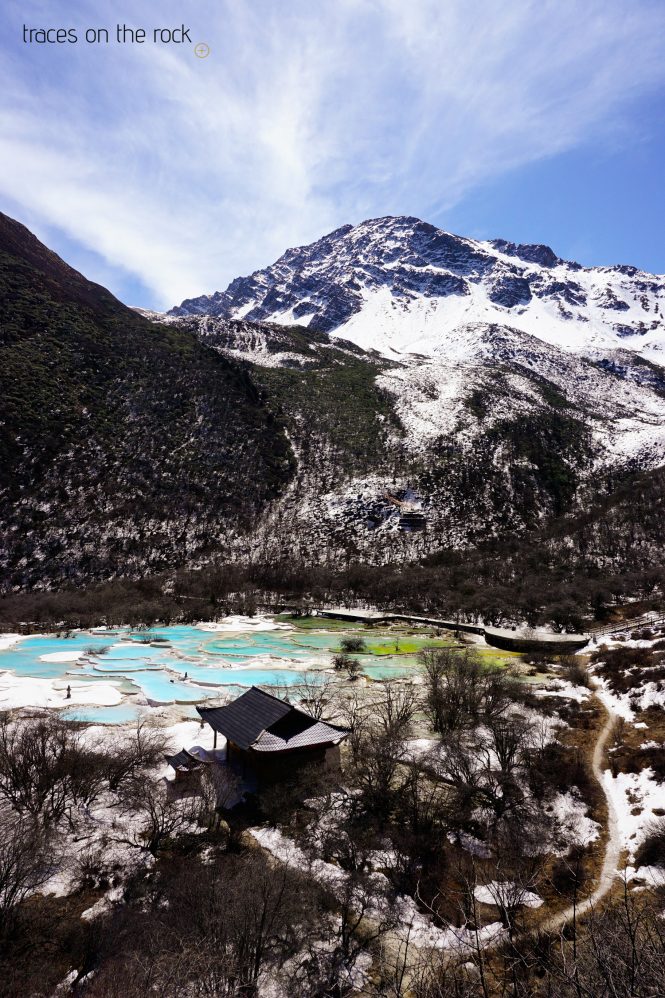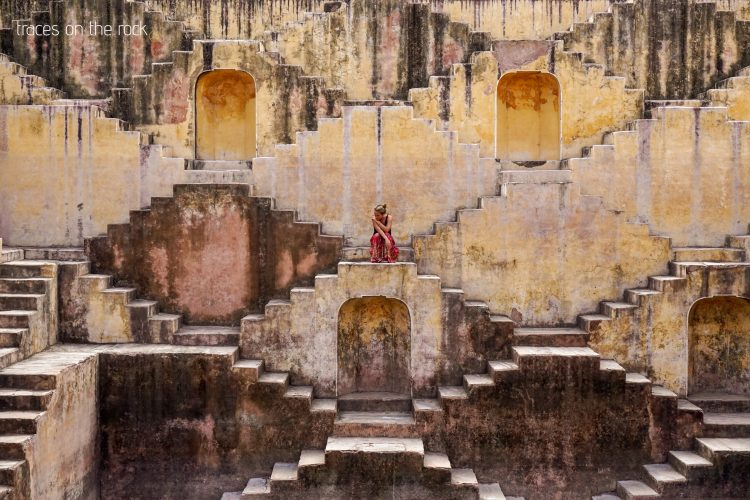My experiences with the Chinese national parks can be summarized as follows: suffocating. The landscape is beautiful without exception, but the parks of the class AAAAA (no spelling mistakes!) are overdeveloped. Visitors walk on paved paths or on wooden boardwalks. Hiking over hill and dale, as I know it from the Alps, is not possible. There are surveillance cameras and Wi-Fi hotspots at each corner. Signs tell me every 100 meters that I should stay on the path and that I should not throw away garbage. Each 200-500 meters visiters can use luxurious restrooms with onsight cleaning staff. Nobody will die of hunger or thirst as I am able to buy snacks and food regularly. Wearing my hiking boots and my outdoor clothing I’m feel like being in the wrong place, even if I’m at 3000m altitude. Furthermore, each park I visited so far, offers a bus shuttle. Hop on, hop of, take a photo, hop on again. That’s the rhythm of most visitors. And if climbing a mountain is too strenuous, as with Huashan mountain, cable cars will bring you to the top with no sweat. Everyone has the chance to experience a summit experience.
I feel incapacitated in the Chinese national parks. I want to run over hill and dale. I want to have the chance to get lost, to get off the path, and to discover things without knowing what to expect. I want to feel the forest, stones or roots under my boots. I want to be able to feel my feet and joints in the evening and say: I made it! But my mountaineering boots have been superfluous at each location so far. I could as well have used flip flops to explore the landscape.
Huanglong National Park
The neighboring Huanglong National Park, with its natural pools, reminds me of the Mammoth Hot Springs in Yellowstone National Park. As a result of chemical processes, calcium carbonate is precipitated and forms so-called travertines. They differ from tufts on the one hand by their distinct layering and on the other hand by their ability to be polished. The travertines are formed by the chemical process of calcium carbonate precipitation. Water with a high concentration of carbon dioxide (CO2), hydrogen carbonate ions (HCO3−) as well as calcium ions (Ca2+) and a low proportion of carbonate ions (CO32−) changes its chemical composition when the water is reaching the surface by degasing carbon dioxide due to a lower atmospheric carbon dioxide. Another way is by a rising temperature of the water. With the lower proportion of carbon dioxid the concentration of hydrogen carbonate ions decreases and the proportion of carbonate ions increases. At a certain concentration calcium carbonate is precipated, which we can finally admire in form of beautiful travertine terraces. Usually travertines radiate bright white. However, if accompanied by limonite, the travertines are more yellowish to brownish. Hematite causes a reddish tint. Depending on the water depth, sediments, solar radiation and algae, the water basins will shine in different colors from yellow to green to blue. The special feature in Huanglong is its location in the high altitude at about 3000m above sea level. This formed a unique natural landscape with rare plants. Allegedly, endangered animals such as the Great Panda, the golden-yellow Stumpfnasenaffe and the Sichuan Takin, a special cattle can be found here as well.
In order to protect the landscape and still make it easy for tourism, the National Park has been intensively developed. Visitors can climb the long way to the colorful pools with the cable car or on a boardwalk. At this altitude, the walk can already cause some shortness of breath. I decided to hike up and was able to enjoy the landscape mostly alone. Unfortunately, I was a little early in the season. The pools lower down the valley were still dry. It was also a long time since I heard birdsong. Unfortunately, this was rarely possible because I was more often surrounded by noisy chattering groups. A trip to nature means to the Chinese, to exchange with others, take pictures, send them immediately to friends and drive to the next highlight. In my opinion that is far from recreation and relaxation and so I enjoyed the solitude of the ascent.
The chinese national park system
But even though I complain about the overdevelopment in so many national parks, I have to take into account that my expectations are based on my experiences in Europe. However, this does not say anything about what expectations the locals have on a park system or even what standards the country has for nature conservation. The overdeveloped infrastructure that I criticize may be desired by the Chinese people. Customer service atits best. Likewise, one has to realize the impact that nature would have if 20,000 people a day stomped across the forest floor of a national park. Nature would be quickly destroyed. In this respect, wooden boardwalks and stone floors are an optimal way to preserve nature. From that point of view, I should be grateful that I had the opportunity to admire these beautiful places as well as millions of visitors before and after me.
Moreover, China can not look back on a century-long history in the area of national parks. According to journalist Jiayun Feng, only in 1925 did China set up its first nature reserve in the Guangzhou province (Dinghu Mountain National Nature Reserve), based on the Russian model. The first national park was built in 1982 (Zhangjiajie National Forest Park). There have bee parks already in the Qin Dynasty but these were rather private gardens of the wealthy or part of a temple complex. The US had founded in 1872 its first national park in the world (Yellowstone National Park). Shortly after Australia, New Zealand and Sweden followed. Feng interviewed bioscientist Zhu Ziyun for her article published in 2017 entitled “Inside China’s Ambitious Plan to Create Its First National Park System” on the confused situation of the national park system in China.
[Some areas] are less national parks than tourist attractions,” said Zhu, who has been to most of them for research purposes. “They were built with good intentions, but over the years, local governments exploited them to attract tourists, putting economic interests above environmental protection goals.”[…] By the end of 2010, China had 2,541 nature reserves, 208 national scenic areas, and 660 national forest parks, yet none of them qualified as a national park by international standards. […] From an administrative perspective, a long-standing problem has been the enforcement of rules protecting restricted areas, in part because there are too many regulating bodies. Currently, 13 different government agencies have a stake in overseeing protected areas […]. Another huge challenge is how to thoughtfully define the mission of the national park system and its relationship with existing protected areas. National parks should enhance the “protected area” designation, rather than weaken the status of other sites with that label. “In the Western hemisphere, ‘national park’ is a mature concept that leaves little room for personal or creative interpretations,” Zhu said. “But in China, the concept is still a novelty. Without a strict definition coming from the top, local officials tend to interpret the idea in a way that serves them best.” Zhu gave the example of the word park (公园 gōngyuán), which “inherently means a place for recreation in the Chinese language. So for those who want to use national parks to attract tourists, they might tap into this.”
Jiayun Feng, in “Inside China’s Ambitious Plan To Create Its First National Park System”
Meanwhile, the term National-level Scenic and Historic Interest Area is considered equivalent to the term National Park. Still, this confirms my impression of the many parks and scenic interest areas I visited. To a large extent, the focus is on tourism and not on the protection and preservation of the natural landscape.

